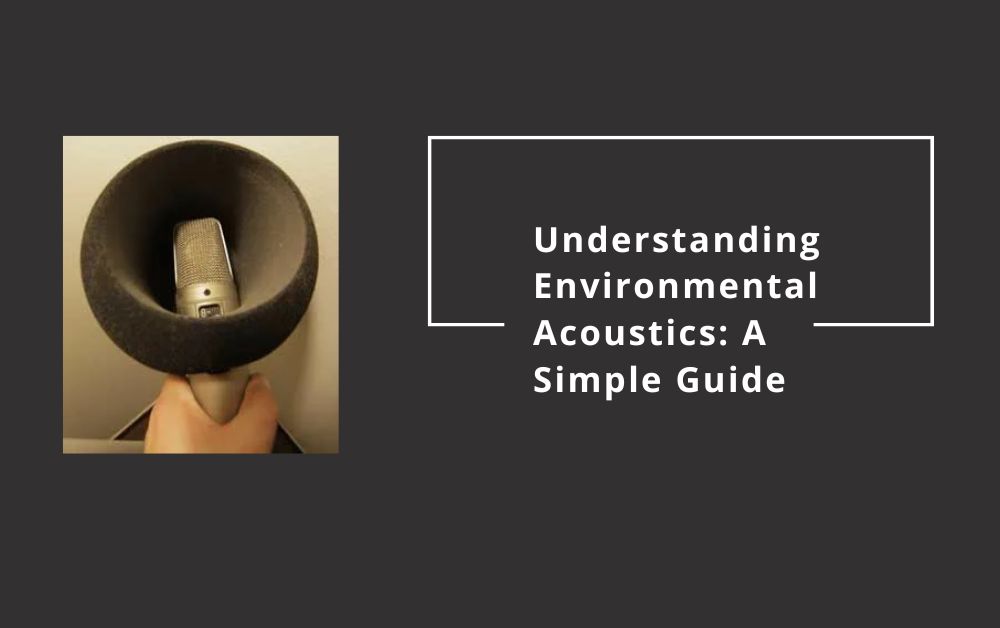Have you ever wondered why certain places are so quiet and peaceful, while others are noisy and chaotic? The answer often lies in environmental acoustics, a fascinating field that studies how sound behaves in different environments. This guide aims to simplify the complex world of environmental acoustics, making it accessible and easy to understand for everyone.
What is Environmental Acoustics?
The Basics
At its core, environmental acoustics is all about sound. It looks at how sound travels through the air, bounces off objects, and gets absorbed by different materials. This field helps us understand why we can hear a concert from a mile away or why some rooms make our voices sound louder.
Why It Matters
But why should we care about environmental acoustics? Well, it affects our daily lives more than we might think. Good acoustics can make our homes, workplaces, and public spaces more comfortable and pleasant. On the other hand, poor acoustics can lead to noise pollution, which can be harmful to our health and well-being.
Key Concepts in Environmental Acoustics
To get a better grasp of environmental acoustics, let’s break down some key concepts.
Sound Propagation
Sound propagation is just a fancy term for how sound moves. When someone talks or a car honks its horn, sound waves travel through the air until they reach our ears. Understanding sound propagation helps us manage noise in busy cities or design concert halls with perfect sound.
Absorption and Reflection
Ever noticed how sound bounces off a tiled bathroom wall but gets muffled by a thick carpet? That’s absorption and reflection in action. Hard surfaces reflect sound, making it bounce around, while soft materials absorb it, reducing noise. This knowledge is crucial for creating spaces with just the right amount of sound.
Noise Control
Noise control is all about keeping unwanted sound at bay. It involves using barriers, sound-absorbing materials, and smart design to reduce noise pollution. This is especially important in cities, near airports, or in places where peace and quiet are essential.
Also read :- The Soothing Sounds of Nature: A Dive Into Environmental Acoustics
The Importance of Good Acoustic Design
In Our Homes
Good acoustic design in our homes can make our living spaces more comfortable. It can reduce the noise from outside, like traffic or neighbors, and minimize echoes inside, making our homes a peaceful retreat.
In Workplaces
In workplaces, proper acoustics can improve concentration and productivity. It can reduce distracting noises and make it easier for employees to communicate effectively.
In Public Spaces
In public spaces, like parks, libraries, and theaters, acoustic design ensures that these places serve their purpose well. It keeps noise levels in check and enhances the overall experience for visitors.
Challenges and Solutions in Environmental Acoustics
Urban Noise Pollution
One of the biggest challenges in environmental acoustics is managing urban noise pollution. Busy streets, construction sites, and industrial activities can create a lot of noise, affecting our health and quality of life.
Solutions
To tackle this, cities can use sound barriers, enforce noise regulations, and incorporate green spaces that absorb sound. Urban planners and architects can design buildings and spaces that minimize noise impact on people.
Enhancing Indoor Acoustics
Another challenge is enhancing indoor acoustics without sacrificing design and aesthetics. Many modern buildings use materials that look great but might not be the best for sound.
Solutions
The solution lies in smart design choices. Using sound-absorbing materials, like acoustic panels or special ceiling tiles, can improve indoor acoustics. Designers can also use furniture and decorations strategically to reduce noise.
The Future of Environmental Acoustics
Looking ahead, environmental acoustics will continue to play a crucial role in creating better living and working environments. With advances in technology and materials, we’ll see even more innovative solutions to manage sound and reduce noise pollution.
Conclusion
Environmental acoustics might seem complex, but it’s all about understanding how sound interacts with our surroundings. By grasping the basics, we can appreciate the role it plays in our daily lives and the importance of good acoustic design. Whether it’s reducing noise pollution in cities or enhancing the sound in our homes, environmental acoustics makes our world a more comfortable place to live.
Note :- If you need more ideas about Environmental acoustics, you can find them on this indexnasdaq.com
